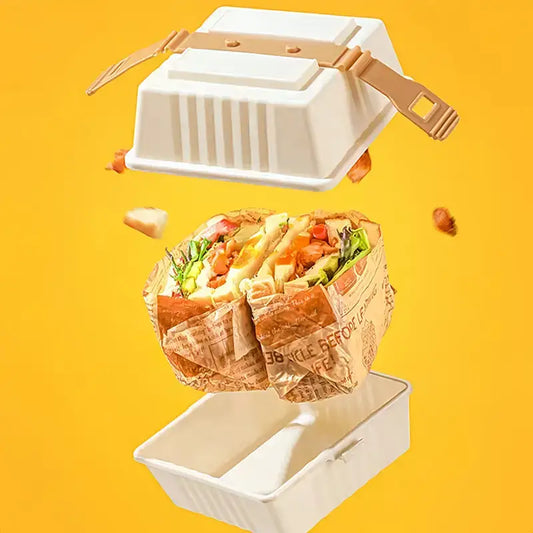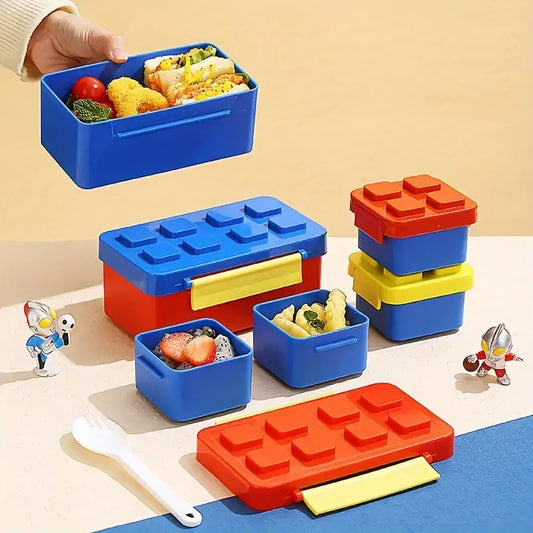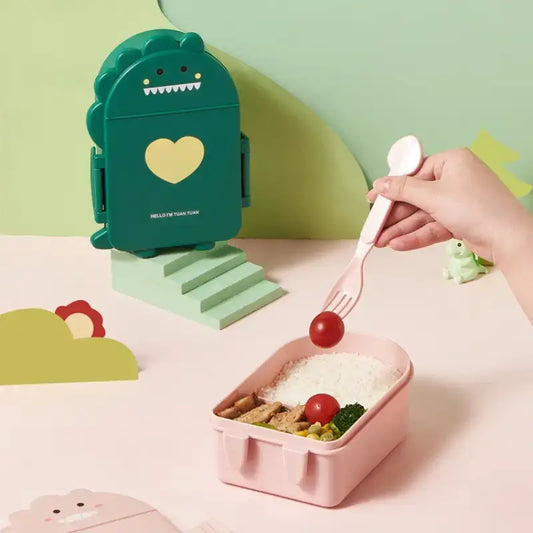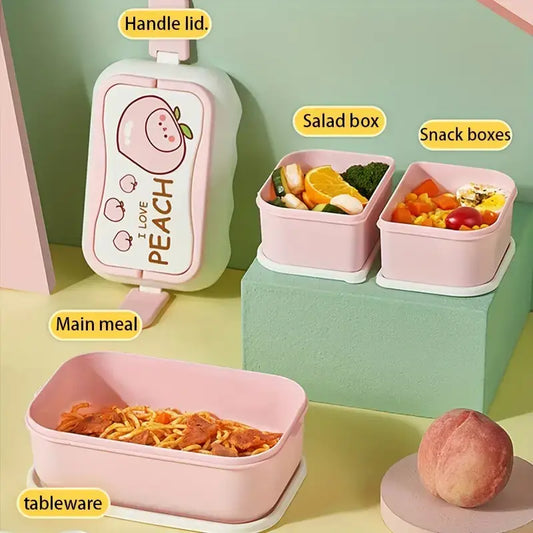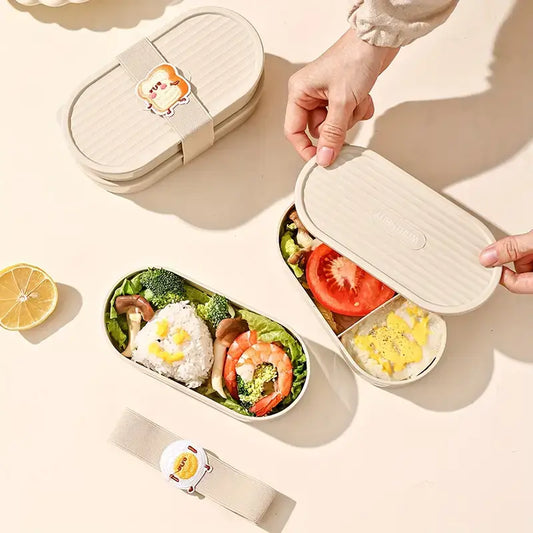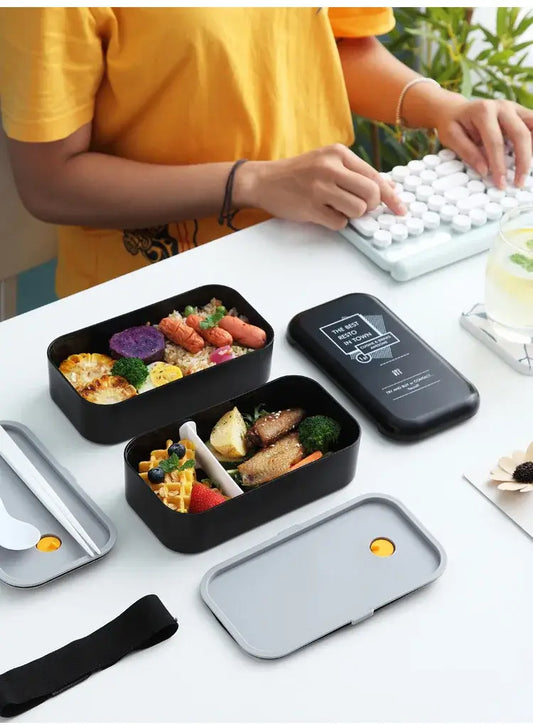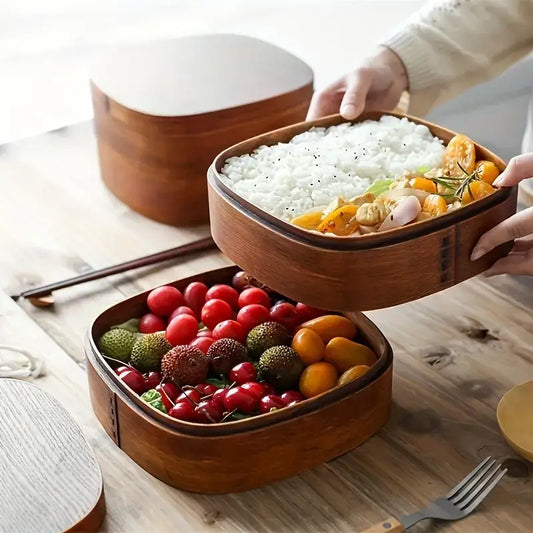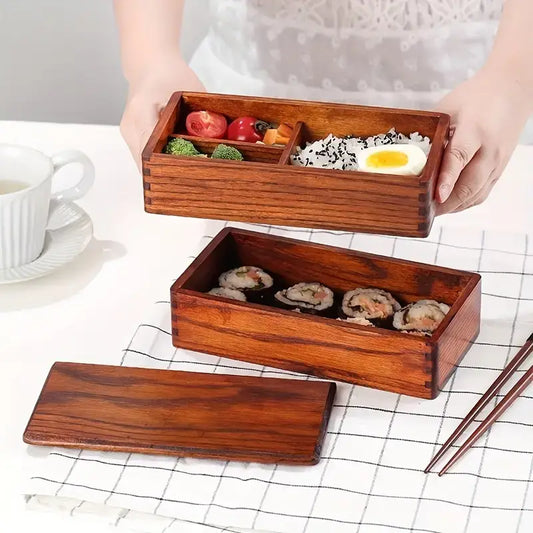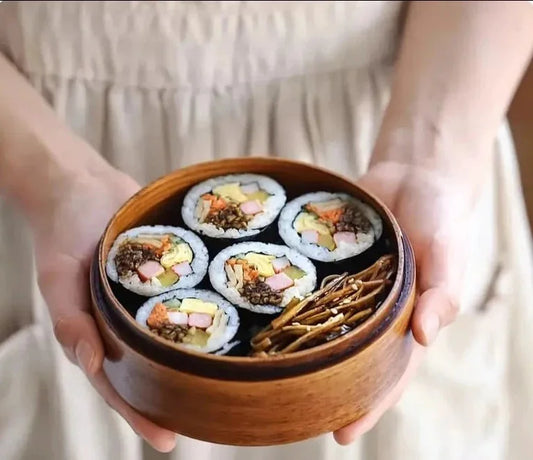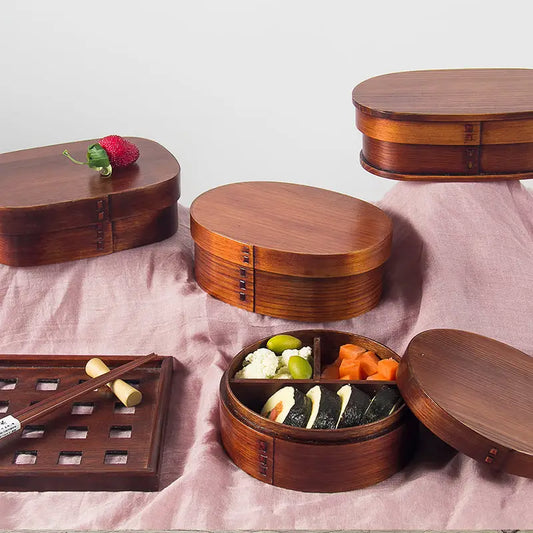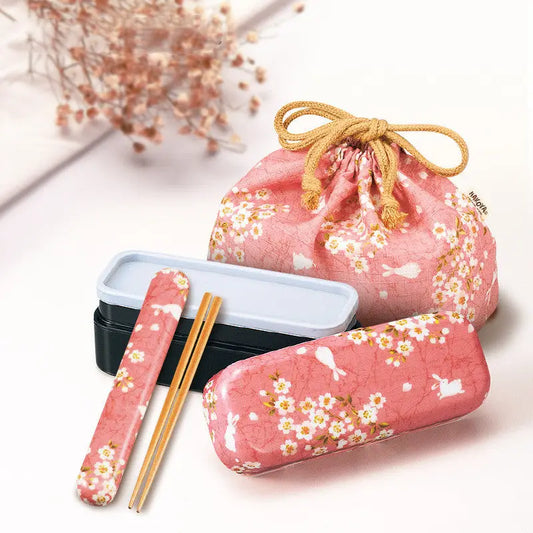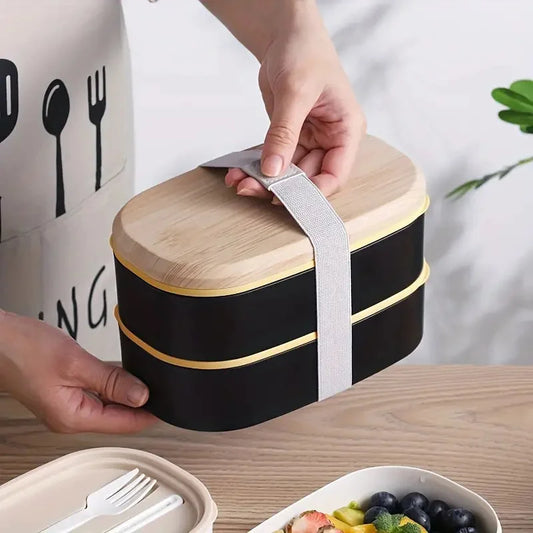A Meal With Meaning: Enter the World of the Bento Box
Welcome to the vibrant and nourishing universe of the Bento Box — Japan’s iconic meal container that balances convenience, creativity, and culture in every compact compartment. Whether packed for a busy workday, a school lunch, or a scenic picnic, the bento box is more than a container — it’s a canvas for edible artistry and mindful living.
Each bento is a story told through ingredients, arrangement, and care. It reflects seasonal flavors, dietary balance, and visual harmony rooted in the Japanese principle of ichiju-sansai — one soup and three dishes. Simple yet sophisticated, practical yet poetic, the bento box transforms every mealtime into a thoughtful ritual.
Our curated Bento Box collection includes handcrafted wooden magewappa, stylish stainless steel containers, leak-proof modern lunchboxes, and kawaii-themed kid-friendly sets. No matter your lifestyle or aesthetic, there's a bento to help you eat beautifully and live intentionally.
The Origins and Evolution of the Bento Tradition
The word bento (弁当) originally meant "convenient," and its history traces back to the Kamakura period (1185–1333), when cooked and dried rice (hoshi-ii) was stored in small containers for travelers and warriors. Over time, bento evolved from simple sustenance to an artistic expression of nourishment, refinement, and care.
During the Edo period, lacquered wooden bento became popular among nobles and actors. The Meiji era brought the rise of ekiben (station bento) for train travelers. Today, bento culture continues to thrive — from convenience store konbini bento to elaborate homemade creations.
| Bento Type | Purpose & Characteristics |
|---|---|
| Homemade Bento | Balanced, customizable, often crafted with love |
| Ekiben | Regional train station meals with local specialties |
| Kyaraben | "Character bento" for children; features cute food art |
| Hinomaru Bento | Simple rice with a red umeboshi center (resembles flag) |
| Convenience Bento | Pre-packaged for grab-and-go lunches |
Bento isn’t just a meal; it’s a cultural artifact that reflects care, thoughtfulness, and identity.
Why the Bento Box is a Global Lifestyle Staple
From Tokyo to Toronto, the bento box has captivated the world with its elegance and efficiency. Here’s why it deserves a place in every kitchen and carry bag:
-
Portion Control & Balance: Designed with compartments that encourage a healthy ratio of grains, protein, vegetables, and fruit.
-
Sustainability: Bento boxes reduce single-use plastics and packaging waste while promoting reusable habits.
-
Aesthetic Appeal: Meals become miniature art installations. A pleasing presentation inspires mindful eating.
-
Meal Prep Hero: Perfect for batch cooking, saving money, and staying energized throughout the day.
-
Cultural Touchstone: Using a bento connects you to centuries of culinary tradition and the joy of home-prepared meals.
Every bento is an act of self-care or care for others. It says: I took time for this. I thought of you.
Styling and Packing the Perfect Bento
Packing a bento is a joyful, mindful process that blends taste, texture, and color. Here are some tips to make every bento a feast for the eyes and soul:
-
Use Color Variety: Include 4-5 different colors using vegetables, proteins, and grains. Think red tomatoes, green broccoli, yellow tamagoyaki, brown rice, and white fish.
-
Play with Shapes: Use cookie cutters, food picks, and dividers to create visual interest and fun for kids and adults alike.
-
Layer Wisely: Pack denser foods at the bottom, lighter items on top. This prevents sogginess and keeps textures fresh.
-
Balance the Nutrients: Follow the ideal ratio: 40% carbs (rice/noodles), 30% protein (meat, tofu, egg), 20% vegetables, 10% fruit or garnish.
-
Pack it Tight: A full bento holds shape better and prevents shifting. Use lettuce leaves or silicone cups as dividers.
| Element | Packing Tip | Example |
| Carbohydrate | Use as base; add visual contrast with toppings | Rice with furikake or onigiri |
| Protein | Slice thin for easy bites | Tamagoyaki, teriyaki chicken, tofu |
| Vegetables | Steam or lightly stir-fry | Broccoli, carrots, lotus root |
| Fruit/Garnish | Use to fill gaps and brighten the palette | Orange slices, strawberries, pickles |
Packing a bento is a meditation on beauty, balance, and nourishment.
Choosing the Right Bento Box for You
The perfect bento box complements your lifestyle, aesthetic, and meal habits. Here are the most common types and what they offer:
-
Wooden Bento (Magewappa): Crafted from cedar or cypress, these boxes offer breathability and a timeless look. Great for rice dishes.
-
Plastic/Resin Bento: Lightweight and colorful, often with built-in dividers. Ideal for kids and busy commuters.
-
Stainless Steel Bento: Sleek, durable, and eco-friendly. Perfect for modern, minimalist styles.
-
Two-Tier or Stackable Bento: Allows for portion separation and meal diversity. Great for big appetites or long days.
-
Thermal Bento: Keeps food hot or cold. Ideal for soups, stews, or picnics.
| Bento Box Type | Best For | Bonus Features |
| Magewappa (Wood) | Traditional appeal, rice lovers | Natural anti-bacterial properties |
| Plastic Bento | Kids, color-lovers, fast packing | Lightweight, often microwave-safe |
| Stainless Steel | Eco-conscious, stylish adults | Odor-resistant, long-lasting |
| Stackable Bento | Meal variety, commuters | Compact storage, space-efficient |
| Thermal Bento | Hot lunches, winter days | Heat retention for soups and stews |
With the right bento box, meal prep becomes something to look forward to.
Bento Box Materials Accessories
Choose the right accessories and extras to match your lifestyle and aesthetic:
| Accessories | Use |
| Chopsticks | Compact and reusable utensils |
| Bento bands | Keeps lid tight and secure |
| Dividers & cups | Organizes and separates dishes |
| Mini sauce bottles | Adds flavor without sogginess |
| Thermo bags | Maintains freshness during transport |
More Than a Meal: Living the Bento Lifestyle
The bento box is not just about eating; it’s about intention, care, and connection. Whether you're packing a meal for yourself, your child, or a loved one, you're engaging in a centuries-old act of love and mindfulness.
Incorporating bento into your lifestyle promotes healthier habits, sustainable practices, and a closer relationship with food. It brings joy to the mundane, turns leftovers into a delight, and offers creative expression on even the busiest mornings.
Explore our Bento Box collection to find the shape, material, and aesthetic that aligns with your daily rhythm. From traditional wooden boxes to playful and practical designs, there’s a bento for every moment.
Eat with color. Pack with care. Carry tradition in your hands.


